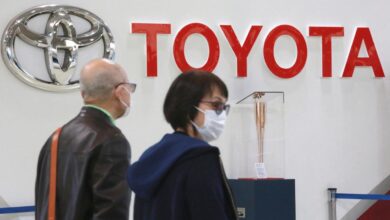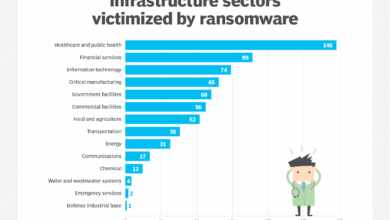
Dare to Hack 1 Million Tesla Model 3s
Dare to hack 1 million Tesla Model 3 electric cars? It sounds like a plot from a cyberpunk thriller, right? But the reality is, the potential for a large-scale cyberattack on a fleet of connected vehicles is a very real and growing threat. This isn’t just about stealing data; we’re talking about potentially compromising the safety and security of millions of people.
Let’s dive into the logistical nightmares, the potential attack vectors, and the terrifying consequences of a successful hack.
Imagine the scale: a million Teslas, all vulnerable to a coordinated attack. The sheer logistical complexity of targeting such a massive network of vehicles is staggering. We’ll explore potential weaknesses in Tesla’s software, its over-the-air update system, and its communication interfaces. We’ll also consider the ethical and legal ramifications of such an attack, and examine what defensive measures could be implemented to prevent this kind of catastrophe.
The Scale of the Challenge

Targeting a million Tesla Model 3s simultaneously isn’t just a matter of multiplying the effort needed for a single hack; it represents a monumental leap in complexity. The sheer scale introduces logistical nightmares and necessitates a level of coordination unseen in previous cyberattacks. Success would require exploiting vulnerabilities at a massive scale, coordinating actions across a vast network, and evading detection across multiple layers of security.The logistical complexities are staggering.
Imagine the sheer number of unique vehicle identification numbers (VINs) that need to be targeted, each with potentially unique firmware versions and security patches. Furthermore, the geographic distribution of these vehicles globally necessitates a distributed attack infrastructure, capable of managing and coordinating attacks across different time zones and network conditions. Maintaining anonymity and avoiding detection across such a broad front would demand an incredibly sophisticated and resilient attack network.
Potential Vulnerabilities Across a Large Fleet
A million Tesla Model 3s present a vast attack surface. While Tesla employs robust security measures, the sheer number of vehicles increases the likelihood of finding and exploiting even minor vulnerabilities. For example, a seemingly insignificant flaw in the over-the-air (OTA) update system, if exploited on a large scale, could potentially compromise the entire fleet. Another area of concern could be vulnerabilities in the vehicle’s onboard communication systems, allowing attackers to gain unauthorized access to sensitive data or control vehicle functions.
The potential for cascading failures, where a compromise in one vehicle leads to the compromise of others, is also a significant threat.
Infrastructure Required for a Large-Scale Attack
Coordinating a million simultaneous attacks requires a sophisticated and highly distributed infrastructure. This would likely involve a botnet – a network of compromised computers – spread across the globe, each capable of targeting individual Tesla vehicles. The botnet would need to be highly resilient to takedown attempts and capable of communicating securely and efficiently with a central command-and-control server.
This server would be responsible for managing the attack, distributing commands, and aggregating the results. The infrastructure would also need to incorporate techniques to evade detection by firewalls, intrusion detection systems, and other security measures employed by Tesla and network providers.
Hypothetical Timeline for a Large-Scale Attack
A hypothetical timeline for such an attack might unfold in several phases:
1. Reconnaissance and Vulnerability Discovery (Months to Years)
This phase would involve extensive research to identify and exploit vulnerabilities in Tesla’s software and hardware. This would require significant resources and expertise in automotive security and reverse engineering.
2. Botnet Development and Deployment (Months)
Building and deploying a global botnet capable of handling a million simultaneous attacks would be a complex undertaking, requiring significant technical expertise and resources. This stage would involve compromising thousands of computers worldwide.
3. Attack Execution (Days to Weeks)
The actual attack would involve coordinated commands sent from the central server to the botnet, exploiting the identified vulnerabilities. The speed and success of this phase would depend on the effectiveness of the vulnerabilities and the resilience of Tesla’s security measures.
4. Data Exfiltration and Damage Control (Ongoing)
After gaining access, the attackers would need to exfiltrate any sensitive data they acquire, such as user information or location data. They would also need to manage the potential damage caused by their actions and attempt to cover their tracks.
Potential Attack Vectors

Tesla’s Model 3, while lauded for its technological advancements, presents a complex target for potential attackers due to its extensive software ecosystem and reliance on external communication. Understanding the potential attack vectors is crucial for developing robust security measures. This section will explore several key vulnerabilities and their potential impact.
Software Vulnerabilities in the Tesla Model 3 Operating System
The Model 3’s operating system, based on a Linux kernel, shares vulnerabilities common to other embedded systems. Potential weaknesses include buffer overflows, memory corruption vulnerabilities, and race conditions within the various software components managing vehicle functions. Exploiting these could allow attackers to gain unauthorized access to the vehicle’s control systems, potentially compromising critical functions like braking, steering, or acceleration.
A successful attack might involve crafting malicious code that exploits a known vulnerability to execute arbitrary commands with elevated privileges. The severity of such an attack would depend on the specific vulnerability exploited and the level of access gained. For example, a buffer overflow in a less critical system component might only lead to a minor system malfunction, while a similar vulnerability in a core control module could have catastrophic consequences.
Weaknesses in Tesla’s Over-the-Air Update System
Tesla’s over-the-air (OTA) update system, while convenient for delivering software patches and new features, also presents a potential attack vector. A compromised OTA update server could distribute malicious firmware updates to a large number of vehicles simultaneously. This could involve injecting malicious code into legitimate update packages, allowing attackers to remotely compromise vehicles without requiring physical access. The success of this attack hinges on the attacker’s ability to compromise the update server’s infrastructure and on the lack of robust verification mechanisms within the vehicle’s update process.
A sophisticated attacker might also leverage techniques like man-in-the-middle attacks to intercept and modify OTA updates before they reach the vehicles.
Risks Associated with Exploiting External Communication Interfaces
The Model 3’s reliance on cellular connectivity (for features like navigation and remote access) and Bluetooth (for connecting mobile devices) introduces further vulnerabilities. Cellular connectivity could be targeted using techniques like SIM swapping or exploiting vulnerabilities in the cellular modem’s firmware. Similarly, Bluetooth vulnerabilities could allow attackers to gain unauthorized access to the vehicle’s infotainment system or even potentially exploit other connected systems through Bluetooth-based attacks.
For instance, a Bluetooth vulnerability might allow an attacker to pair a malicious device, gaining access to the vehicle’s network and potentially compromising other connected systems. The potential impact of such attacks ranges from data theft to complete control over vehicle functions.
Comparison of Attack Vector Difficulty and Impact
The following table summarizes the potential attack vectors, their relative difficulty, potential impact, and possible mitigation strategies:
| Attack Vector | Difficulty | Potential Impact | Mitigation Strategies |
|---|---|---|---|
| Software Vulnerabilities (OS) | High (requires deep OS knowledge) | High (complete vehicle control possible) | Regular security audits, robust software development practices, and timely patching. |
| OTA Update System Compromise | Medium (requires server compromise) | Very High (mass compromise possible) | Secure server infrastructure, strong authentication, and robust update verification mechanisms. |
| Cellular Connectivity Exploitation | Medium (requires exploiting modem vulnerabilities or SIM swapping) | Medium (data theft, remote access) | Secure cellular communication protocols, strong authentication, and regular firmware updates for the cellular modem. |
| Bluetooth Exploitation | Low (exploiting known Bluetooth vulnerabilities) | Low to Medium (infotainment system compromise, potential escalation) | Regular Bluetooth firmware updates, secure pairing mechanisms, and limiting Bluetooth functionality when not needed. |
Impact Assessment
A successful cyberattack targeting a million Tesla Model 3 vehicles would have cascading consequences, impacting Tesla’s financial stability, customer trust, and public safety. The scale of such an event necessitates a thorough examination of its potential ramifications. The interconnected nature of modern vehicles and the reliance on software makes them vulnerable to a wide range of attacks, some with potentially devastating results.
The consequences extend far beyond simple inconvenience; they could lead to significant financial losses, safety hazards, and irreparable damage to Tesla’s reputation. Let’s delve into the specifics.
Financial Losses
The financial implications of a successful attack on a million Tesla Model 3s would be substantial for both Tesla and its customers. Tesla would face immense costs associated with rectifying the vulnerabilities, recalling vehicles for repairs, and potentially compensating affected customers. The cost of software updates, vehicle repairs, and legal battles could reach into the billions of dollars.
For customers, the costs would involve potential loss of vehicle functionality, repair expenses, and potentially the devaluation of their vehicles. Consider, for example, the cost of replacing compromised battery management systems across such a large fleet – a scenario that could easily bankrupt many individuals. The ripple effect on Tesla’s stock price could also be catastrophic, leading to massive losses for investors.
Safety Risks
A successful cyberattack could compromise critical vehicle functions, resulting in significant safety risks for drivers and the public. Imagine a scenario where attackers remotely disable braking systems, accelerate vehicles uncontrollably, or manipulate steering. The potential for mass-casualty accidents is terrifyingly real. Even less severe attacks, such as compromising the infotainment system to cause distractions, could lead to accidents.
Furthermore, a large-scale attack could overwhelm emergency services, leading to delayed responses and increased casualties. We’ve seen examples of smaller-scale incidents involving remote vehicle compromise in the past, and extrapolating that to a million vehicles paints a bleak picture.
Reputational Damage
The reputational damage to Tesla following a successful large-scale cyberattack would be immense and long-lasting. Consumer confidence in Tesla’s vehicles would plummet, impacting future sales and potentially driving customers towards competing brands. The damage to Tesla’s brand image as a technologically advanced and safety-conscious company would be significant, requiring extensive and costly public relations efforts to rebuild trust.
This could involve substantial investments in cybersecurity measures and increased transparency regarding the company’s security protocols to regain public confidence. The impact could be comparable to the reputational damage suffered by other companies following major data breaches, with long-term effects on brand loyalty and market share.
Defensive Measures
Protecting a million Tesla Model 3 vehicles from a coordinated cyberattack requires a multi-layered, proactive approach. This goes beyond simple software updates; it demands a comprehensive cybersecurity strategy encompassing technological safeguards, robust procedures, and a dedicated security team. The scale of the challenge necessitates a paradigm shift in how we think about automotive cybersecurity.A robust defense against large-scale attacks on a fleet of connected vehicles needs to address vulnerabilities at multiple levels, from the individual car’s software to the overarching network infrastructure.
A single point of failure could cascade into widespread compromise, highlighting the importance of redundancy and diverse security mechanisms.
Vehicle-Level Security Measures
Tesla needs to implement robust hardware and software security measures within each vehicle. This includes secure boot processes to prevent unauthorized code execution, encryption of all communication channels, and regular security audits of the vehicle’s software. For example, employing a hardware security module (HSM) to protect cryptographic keys would significantly enhance security. Furthermore, implementing advanced intrusion detection systems (IDS) within the vehicle’s onboard computer can detect and respond to malicious activity in real-time.
This could involve analyzing network traffic for suspicious patterns and blocking unauthorized access attempts.
Network Security and Infrastructure
Securing the network infrastructure that connects the vehicles is paramount. This includes the cloud infrastructure used for data storage, software updates, and remote diagnostics. Employing strong authentication mechanisms, intrusion prevention systems (IPS), and regular penetration testing of the network are crucial. A robust architecture with multiple layers of security, including firewalls and access control lists (ACLs), will limit the impact of a successful breach.
Redundancy is critical; if one server fails, another should seamlessly take over to maintain service and prevent disruptions. Consider implementing a zero-trust security model, verifying every device and user attempting to access the network regardless of their initial location or perceived trust level.
Software Update and Patch Management
Regular software updates and security patches are the cornerstone of a strong defense. Tesla needs a streamlined and efficient system for delivering these updates to all vehicles in the fleet. This includes robust over-the-air (OTA) update mechanisms with built-in security checks to ensure the integrity of the updates. A critical aspect is the rapid response to vulnerabilities; patching known exploits promptly is crucial to prevent attackers from exploiting them at scale.
Implementing a system for rapid vulnerability discovery and remediation, perhaps utilizing a bug bounty program, is essential. This allows for external security researchers to identify weaknesses before attackers do. The update process itself should be secured, verifying the authenticity and integrity of each update before it’s installed.
Incident Response Plan
A comprehensive incident response plan is crucial for mitigating the impact of a successful attack. This plan should detail the procedures for detecting, containing, and recovering from a security incident. Regular simulations and drills are necessary to ensure that the plan is effective and that personnel are trained to respond appropriately. The plan should include communication protocols for informing affected customers and regulatory bodies.
A clear chain of command and defined roles and responsibilities are also vital for effective incident management. Consider including external cybersecurity experts in the response plan for critical incidents, providing access to advanced tools and expertise.
Employee Training and Awareness
Internal security is as important as external security. Tesla employees involved in vehicle development, manufacturing, and network management need comprehensive security training. This includes awareness of phishing attacks, social engineering tactics, and secure coding practices. Regular security awareness training can significantly reduce the risk of human error, a common entry point for attackers. Implementing multi-factor authentication (MFA) for all employees accessing sensitive systems is a basic but crucial measure.
Strict access control policies should be enforced to limit access to sensitive data and systems only to authorized personnel.
Ethical and Legal Implications: Dare To Hack 1 Million Tesla Model 3 Electric Car
The prospect of a million Tesla Model 3s simultaneously compromised presents a chilling scenario, raising profound ethical and legal questions that extend far beyond the realm of typical cybersecurity breaches. The sheer scale of potential harm, coupled with the inherent risks associated with autonomous driving technology, necessitates a careful examination of the moral and legal responsibilities involved. This discussion will explore the ethical considerations, the legal ramifications for both attackers and Tesla, and the crucial role of responsible vulnerability disclosure.
Ethical Considerations of Large-Scale Vehicle Cyberattacks
A large-scale cyberattack targeting autonomous vehicles presents significant ethical dilemmas. The potential for widespread injury or even death is undeniable. The attacker’s actions would not only violate the privacy and security of millions of individuals but could also severely disrupt critical infrastructure and public safety. Beyond the immediate physical harm, the erosion of public trust in autonomous technology, a crucial component of future transportation, would be catastrophic.
Imagine the challenge: daring to hack a million Tesla Model 3s! That kind of complex system requires equally sophisticated management tools. To handle that scale, you’d need robust, adaptable applications, which is where learning about domino app dev the low code and pro code future becomes crucial. Understanding low-code/pro-code development could be the key to managing the data and potential vulnerabilities inherent in such a massive undertaking, ultimately securing those million Teslas.
This ethical lapse extends to the potential for misuse of data obtained through the attack, which could range from identity theft to blackmail. The question of intent – whether the attack was malicious or a reckless act of negligence – would also heavily influence the ethical judgment.
Legal Ramifications for Perpetrators
The legal repercussions for perpetrators of such a large-scale attack would be severe. Depending on the jurisdiction, charges could range from computer fraud and abuse to terrorism, especially if the attack results in significant physical harm or property damage. Sentencing could involve lengthy prison terms and substantial fines. The complexity of tracing the attack back to the perpetrators would pose a significant challenge, but successful prosecution would depend heavily on evidence collected, such as digital footprints and network logs.
International cooperation would likely be necessary if the perpetrators operate across multiple jurisdictions. The legal landscape surrounding autonomous vehicle hacking is still developing, but existing laws related to cybercrime, sabotage, and potentially even homicide, depending on the consequences, would be applicable.
Legal Ramifications for Tesla
Tesla, as the manufacturer of the affected vehicles, would also face significant legal scrutiny. Lawsuits from affected individuals claiming negligence, breach of contract, or product liability are highly probable. The legal battles would likely center on Tesla’s security protocols, their responsiveness to known vulnerabilities, and their diligence in providing software updates and security patches. The extent of Tesla’s liability would depend on the court’s determination of whether they met the industry standard of care in designing and maintaining the security of their vehicles.
The outcome could significantly impact Tesla’s reputation, its stock value, and its future development of autonomous driving technology.
Responsible Disclosure of Vulnerabilities
Responsible disclosure is paramount in mitigating the risks of such large-scale attacks. This involves researchers identifying vulnerabilities, privately reporting them to Tesla, allowing them sufficient time to address the issues before public disclosure. This process balances the need to protect consumers from harm with the importance of public awareness and the ongoing improvement of cybersecurity practices. A responsible disclosure policy would involve clear communication channels, defined timelines, and a commitment from both the researchers and Tesla to ensure the vulnerability is patched effectively before it can be exploited maliciously.
Failure to adhere to responsible disclosure practices could expose Tesla to greater legal liabilities and severely damage public trust.
Potential Legal Battles
Imagine a scenario where a group of hackers successfully compromises a million Tesla Model 3s, causing widespread traffic disruptions and several accidents resulting in injuries. Tesla faces a wave of class-action lawsuits alleging negligence and product liability. The hackers are charged with multiple felonies, including computer fraud and endangerment. Simultaneously, a debate rages on about the ethical implications of autonomous vehicle security and the responsibility of manufacturers to ensure robust cybersecurity measures.
This scenario could involve lengthy and costly litigation, including complex expert testimony on cybersecurity practices, software vulnerabilities, and the potential for malicious exploitation. The case would set a legal precedent for future cases involving large-scale cyberattacks on autonomous vehicles, shaping the future legal landscape of this emerging technology.
Illustrative Scenario: A Coordinated Software Update Exploit

This scenario details a hypothetical large-scale attack leveraging a compromised software update mechanism to affect a significant portion of the one million Tesla Model 3 vehicles. The attacker’s goal is not necessarily to cause immediate physical harm, but to disrupt operations and potentially extract valuable data. This attack hinges on exploiting vulnerabilities within Tesla’s over-the-air (OTA) update system.The attacker, a sophisticated group with deep knowledge of Tesla’s software architecture and security protocols, gains access to a legitimate Tesla software distribution server.
This might involve exploiting a vulnerability in a less-secure component of Tesla’s infrastructure or through social engineering targeting an insider.
Compromising the Update Server
The attackers inject malicious code into a seemingly innocuous firmware update. This code is designed to remain dormant until activated by a specific trigger. The malicious update is then disseminated through the standard OTA channels, seamlessly blending with legitimate updates. This phase relies heavily on the attacker’s understanding of digital certificate validation and the overall update process. They need to ensure the update appears authentic to avoid detection by Tesla’s security measures.
Activating the Malicious Code
The trigger for the malicious code could be anything from a specific date and time to a geographic location or even a combination of factors. For example, the attacker might choose to activate the code a week after the update is rolled out to maximize the number of affected vehicles. Upon activation, the malicious code initiates its actions.
Impact of the Attack, Dare to hack 1 million tesla model 3 electric car
The malicious code might have several effects. It could disable certain vehicle functions, such as the infotainment system, navigation, or even the automatic emergency braking system. Alternatively, it could enable remote access to the vehicle’s onboard systems, allowing the attacker to collect data like GPS location, driving habits, or even potentially sensitive user information stored within the vehicle’s internal systems.
So, you want to hack a million Tesla Model 3s? That’s ambitious! But before you even think about targeting that many connected vehicles, you need to understand the massive cloud security implications. Think about the data involved – you’ll need rock-solid security, and that’s where understanding tools like Bitglass comes in; check out this great article on bitglass and the rise of cloud security posture management to grasp the scale of the challenge.
Ultimately, securing the cloud is the first step to securing those Teslas (and maybe even preventing your own hack attempt from getting thwarted!).
Imagine a scenario where thousands of Model 3s suddenly experience a complete shutdown of their navigation systems during rush hour, creating widespread traffic disruption. Or, more critically, consider the potential for compromising the safety features, creating a risk of accidents.
Attacker Motivation and Overall Impact
The attackers might be motivated by financial gain (selling stolen data on the dark web), political activism (disrupting a specific event or industry), or simply demonstrating a vulnerability in a widely used system. The overall impact could be significant, including economic losses for Tesla, widespread public disruption, and potential safety risks for drivers. The damage extends beyond the immediate effects; the loss of public trust and the reputational damage to Tesla could be substantial, requiring significant investment to restore confidence and implement enhanced security measures.
The long-term consequences could include stricter regulations on OTA updates and increased scrutiny of the automotive industry’s cybersecurity practices.
Last Point
The prospect of a successful cyberattack on a million Tesla Model 3s is chilling, highlighting the urgent need for robust cybersecurity measures in the automotive industry. While the hypothetical scenarios we’ve explored are frightening, they serve as a crucial wake-up call. The potential for chaos, financial loss, and even loss of life is immense. Understanding the vulnerabilities and developing effective countermeasures is not just a technological challenge; it’s a matter of public safety and security.
Let’s hope the industry takes this seriously and prioritizes the protection of its connected vehicles.
Popular Questions
What specific types of data could be stolen in such an attack?
Data stolen could include personal information (names, addresses, contact details), vehicle location data, driving habits, and potentially even access to vehicle controls.
Could a hacked Tesla be used for malicious purposes, like causing an accident?
Yes, depending on the vulnerability exploited, a successful attack could potentially allow remote control of vehicle functions, leading to dangerous situations.
What role does insurance play in the aftermath of a large-scale Tesla hack?
Insurance coverage would likely vary depending on the specific policy and the nature of the damages. Cybersecurity incidents are a relatively new area, so policy specifics need careful review.
What is Tesla’s current stance on cybersecurity for its vehicles?
Tesla actively works on improving its vehicle’s cybersecurity through software updates and security patches. However, like any connected device, it remains vulnerable to evolving threats.




